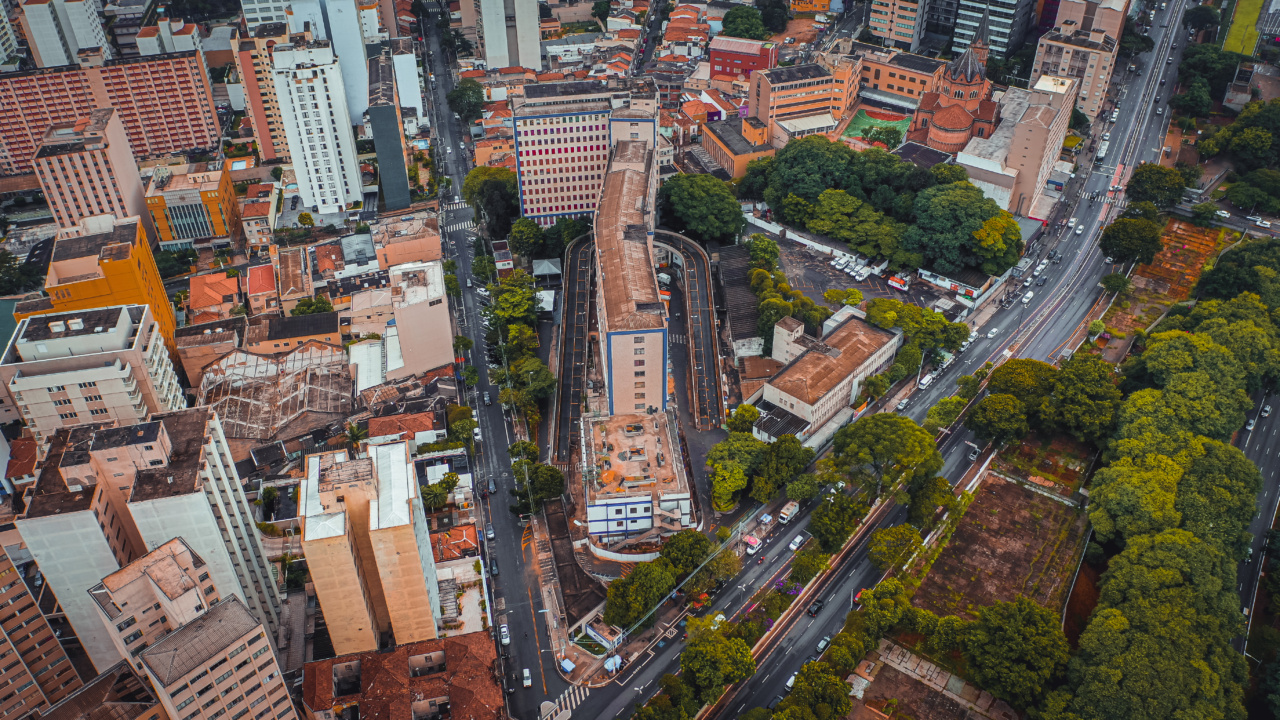Green infrastructure refers to the network of natural and semi-natural elements that provide multiple ecological, economic, and social benefits, including reducing urban heat islands, flood prevention, improving air and water quality, providing habitats for wildlife, enhancing recreational opportunities, and improving human health and wellbeing. Investing in green infrastructure can lead to significant improvements in public health, through the reduction of exposure to air pollutants, noise, and the improvement of mental health and physical activity.
Green Infrastructure and Urbanization
The rapid urbanization of cities around the world has put a strain on the environment and public health.
Urbanization is often associated with an increase in traffic congestion, infrastructure development, and industrialization, which generate pollution, and a decrease in green spaces and natural landscapes. Without proper planning, this can lead to adverse impacts on public health, with increased incidents of respiratory illnesses, mental health disorders, and physical inactivity.
Green infrastructure can provide a solution to these challenges by providing an alternative to traditional grey infrastructure, such as concrete and steel, that tends to exacerbate urbanization’s negative impacts.
Green infrastructure includes natural features such as parks, green roofs, gardens, wetlands, and greenways that can capture and treat stormwater, reduce runoff, and filter pollutants. Additionally, green infrastructure can mitigate the urban heat island effect by absorbing and reducing the amount of solar radiation that greenfield spaces reflect.
Air Quality and Health Benefits from Green Infrastructure
Air pollution has been linked to numerous health problems, including asthma, cardiovascular diseases, respiratory disease, and cancer. It has significant impacts on children and older adults with compromised immune systems.
Green infrastructure elements can help to reduce exposure to air pollutants and improve air quality by removing pollutants, including nitrogen dioxide, particulate matter, and sulfur dioxide.
Green infrastructure does this through a variety of mechanisms, including acting as a sink for pollutants, improving soil activity, providing habitats for birds that consume insects, which can reduce chemicals, and creating a microclimate that promotes plant growth, which can remove pollutants through deposition. Green infrastructure can act as a barrier to pollution by creating a perimeter around high-emission zones such as highways.
Green infrastructure can potentially provide a cost-effective alternative to installing expensive air filtering systems in buildings.
Noise Reduction and Health Benefits from Green Infrastructure
Noise pollution, which is most commonly generated by traffic, can have significant impacts on public health, including sleep disturbance, heart disease, and cognitive impairment.
Natural elements can mitigate noise pollution by absorbing sound waves, providing a buffer around noise sources, and preventing sound from reflecting back to the source.
Green infrastructure can create a refuge from urban noise pollution. For example, green roofs can provide insulation from noise, while trees and other vegetation can absorb sound waves.
Trees with dense foliage that maintains leaves throughout the year, such as spruce trees, can be particularly effective in reducing noise pollution. Green spaces, such as parks and gardens, can also mitigate the noise pollution that can emanate from surrounding areas, helping to reduce stress levels and promote mental health.
Mental Health and Exercise Benefits from Green Infrastructure
Mental health disorders are increasing worldwide, with the World Health Organization (WHO) highlighting that depression is the leading cause of disability worldwide.
Green infrastructure can provide significant public health benefits by enhancing the quality of life and mental wellbeing among urban residents. Green spaces provide people with a connection to nature, which can lead to decreased stress levels.
Green spaces provide opportunities for exercise, which can help prevent and mitigate numerous physical and mental health problems.
Green infrastructure can provide opportunities for walking, running, and cycling, which can improve cardiovascular health and overall fitness levels. Additionally, the presence of green spaces promotes social interaction and can help to combat the issue of social isolation, which can be particularly prevalent among urban populations.
Economic Benefits of Investing in Green Infrastructure
Investing in green infrastructure can have significant economic benefits.
At the most basic level, green infrastructure can reduce the costs associated with providing traditional grey infrastructure by providing an alternative that can perform similar functions in some cases. For example, green roofs can reduce the costs associated with heating and cooling buildings and improve the energy efficiency of buildings.
Green infrastructure can provide numerous economic benefits, including providing spaces for recreational activities that generate revenue such as sports facilities, community gardens, and green space; and creating local jobs and investment opportunities in areas such as urban agriculture, public parks, and tree planting.
Case Studies in Green Infrastructure and Public Health
Several case studies have been conducted that demonstrate the positive impacts of green infrastructure on public health. One such study examined the impact of a 10-acre park in Los Angeles on the local population.
The study found that the park provided residents with an opportunity for physical activity and reduced air pollution in the nearby area, leading to a reduction in health problems. Another study looked at the impact of improved bicycle infrastructure on levels of physical activity in Copenhagen, Denmark. The study found an increase in physical activity of up to 23% following the construction of new bicycle infrastructure.
Other studies have examined the impacts of green roofs on reducing air pollution and heat island effects.
A study in New York City found that green roofs could lower the temperature of urban roofs by up to 70°F during summertime, lowering the need for air conditioning and reducing carbon emissions. A study in Chicago found that one square meter of green roof could absorb 24 liters of water during a rainfall event, significantly reducing the amount of runoff that contributes to flooding and flooding-related health problems.
Conclusion
Investing in green infrastructure can have significant positive impacts on public health, including reducing exposure to air and noise pollution, improving mental health and physical activity, and providing economic benefits.
Green infrastructure can provide a cost-effective and sustainable alternative to traditional grey infrastructure, which has significant negative impacts on public health. As urbanization continues to increase globally, it is imperative that policymakers and urban planners consider the benefits of green infrastructure when designing and developing urban environments.































